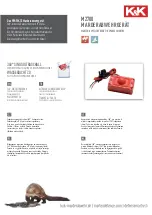
Connecting
6.1 Instructions for EMC-compliant drive installation
SINAMICS DCM DC Converter
104
Operating Instructions, 12/2018, A5E34763375A
Radio interference suppression filters generate leakage currents. In accordance with
EN 61800-5-1, a PE connection with a cross-section of 10 mm
2
is required. For the filters to
have maximum effect, it is absolutely essential that they and the device are installed on a
single metal plate.
In the case of converters with a 3-phase connection, the minimum rated current of the filter is
the same as the device's input current or output DC current, as specified on the device rating
plate (see Armature Input and Armature Output respectively), times 0.82.
In the case of a two-phase connection (field supply), only two phases are connected to the
three-phase radio interference suppression filter. In this case, the minimum rated current of
the filter is the same as the input current (see Field input) or field DC current specified on the
device rating plate.
6.1.6
Information on line-side harmonics produced by converter units in a fully-
controlled two-pulse bridge circuit configuration (B6C and (B6)A(B6)C)
The majority of converter units for medium-power applications have a fully-controlled three-
phase bridge circuit. Below is an example of the harmonics that can be found in a typical
system configuration for two firing angles (
α
= 20° and
α
= 60°).
The values have been taken from a previous publication, "Oberschwingungen im
netzseitigen Strom sechspulsiger netzgeführter Stromrichter (Harmonics in the Line-Side
Current of Six-Pulse, Line-Commutated Converters)" by H. Arremann and G. Möltgen,
Siemens Research and Development Division, Volume 7 (1978) No. 2, © Springer-Verlag
1978.
In addition, the formulas are specified which, depending on the actual operating data in use
[line voltage (no-load voltage U
v0
), line frequency f
N
, and DC current I
d
], can be used to
calculate the short-circuit power S
K
and armature inductance L
a
for the motor for which the
specified harmonics spectrum applies. If the actual line short-circuit power and/or actual
armature inductance deviate from the values calculated in this way, then they will need to be
calculated on a case-by-case basis.
The harmonics spectrum listed below is produced if the values for the short-circuit power S
K
at the connection point of the device and the armature inductance L
a
of the motor, calculated
using the formulas below, match the actual system values. If the values do not match, the
harmonics will have to be calculated separately.
a)
α
= 20°
Fundamental factor g = 0.962
b)
α
= 60°
Fundamental factor g = 0.953
ν
I
ν
/ I
1
ν
I
ν
/ I
1
ν
I
ν
/ I
1
ν
I
ν
/ I
1
5
7
11
13
17
19
23
25
0.235
0.100
0.083
0.056
0.046
0.035
0.028
0.024
29
31
35
37
41
43
47
49
0.018
0.016
0.011
0.010
0.006
0.006
0.003
0.003
5
7
11
13
17
19
23
25
0.283
0.050
0.089
0.038
0.050
0.029
0.034
0.023
29
31
35
37
41
43
47
49
0.026
0.019
0.020
0.016
0.016
0.013
0.013
0.011
















































